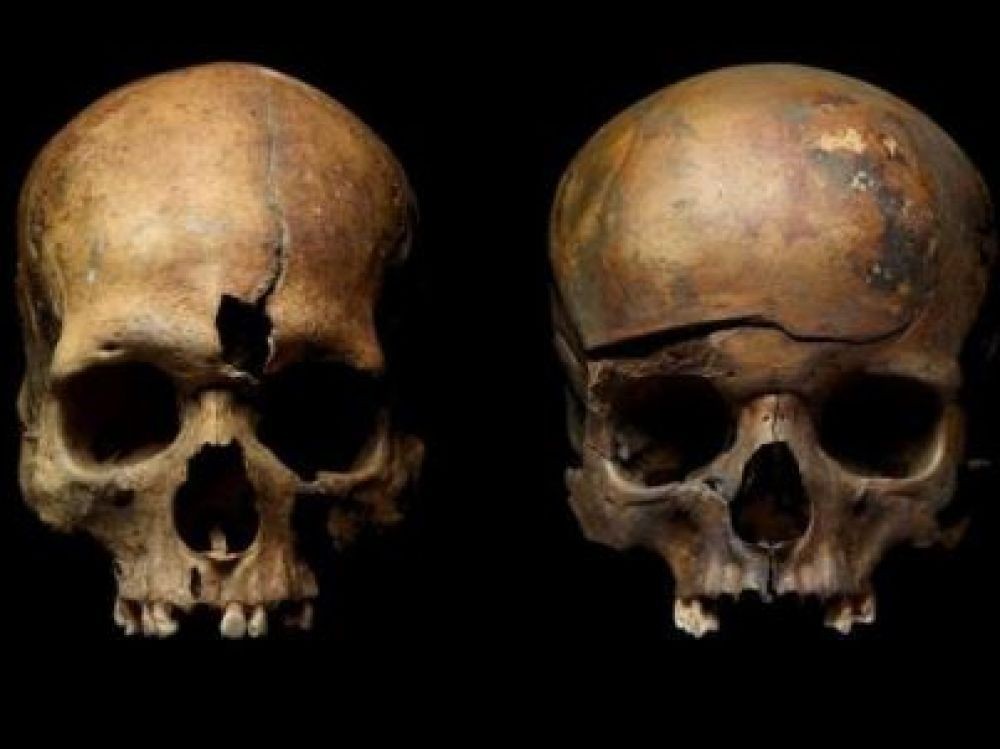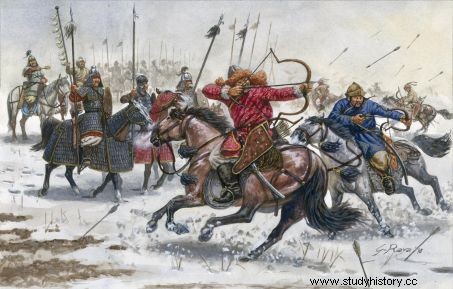Genetic analyzes reveal the kinship between victims of the massacres of the Mongol Golden Horde in Russia in 1238.

Relatives identified in a medieval mass grave in Russia.
According to the texts, the arrival of the Mongols in the 13th century in what is now Russia was a surge of horsemen of the Apocalypse…. More than a hundred thousand men from the army of Khan Batou (1205? - 1255), founder of the Golden Horde and grandson of the famous Genghis Khan, descended on these territories, ravaging them in the process. During the first third of the 13th century, the Mongols set out to conquer China, Central Asia, the Caucasus, the Volga, Bulgaria, and the Eastern European plains, before turning to Western Europe... They thus plundered the principalities of Rus' between 1236 and 1240, reciting a long list of carnage, fires and enslavement of the populations. Until annihilating kyiv, December 6, 1240.
According to the texts, the arrival of the Mongols in the 13th century in what is now Russia was a surge of horsemen of the Apocalypse…. More than a hundred thousand men from the army of Khan Batou (1205? - 1255), founder of the Golden Horde and grandson of the famous Genghis Khan, descended on these territories, ravaging them in the process. During the first third of the 13th century, the Mongols set out to conquer China, Central Asia, the Caucasus, the Volga, Bulgaria, and the Eastern European plains, before turning to Europe. Western Europe… They thus plundered the principalities of Rus' between 1236 and 1240, reciting a long list of carnage, fires and enslavement of the populations. Until the annihilation of kyiv on December 6, 1240. This violence against civilian populations affected both men and women, as the exhumed remains of a family decimated in 1238, in Yaroslavl, one of the oldest cities of Russia. These were among hundreds of bodies found in mass graves. Genetic analyzes have made it possible to distinguish the remains of a mother, aged over 55, her daughter, and a grandson of around 20 years old. Obtained by researchers from the Institute of Archeology of the Russian Academy of Sciences and the Moscow Institute of Physics and Technology, these results were announced at an international conference held at the end of August 2019 at the Museum of Anthropology in Moscow. These data, relayed by the journal Live Science, open a window on this dramatic period of history when the Russians, like many other peoples, had to suffer the terrible invasion of the Mongols.

Illustration of the Mongol armies of the Golden Horde, during the invasion of Russia, in the 13th century. Credits:Leemage/AFP
According to Asya Engovatova, deputy director of the Institute of Archeology, responsible for the excavations, the three members of this family shared several characteristics, including an osteoma (anarchic bony growth) on the cranial vault and stigmata of a spina bifida , an inherited birth defect affecting the spinal cord. They were also carriers of a greater number of dental caries than those found on the many other victims from the nine mass graves unearthed. Possibly due to a diet high in "sugar and honey", clues to their belonging to a high social class. It was in what must have been an imposing area, given the remains of buildings that had been excavated, that these three relatives were exhumed in the heart of the citadel of Yaroslavl, near about fifteen other remains. The historical chronicles - which evoke then "a city drowned in blood - place the Yaroslavl massacre in the context of the Mongol military campaigns against the Grand Duchy of Vladimir. It was from 2005 that the extent of these Mongolian devastations began to be measured, more than 300 people having since been found in Yaroslavl, all bearing traces of violent death. The Khans of the Golden Horde ruled western Siberia and the future southern Russia until the end of the 15th century (1241-1480).
